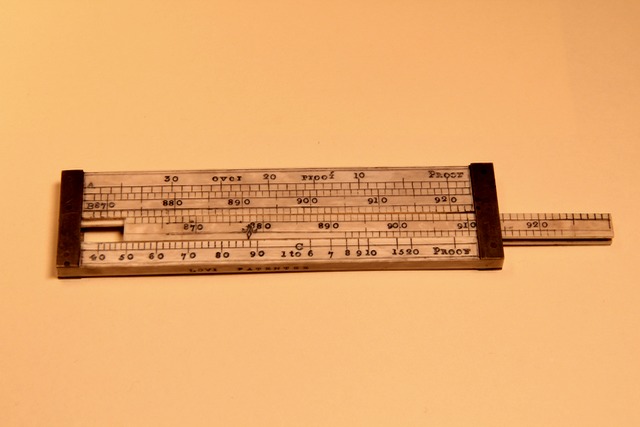Hall and the usage of the beads
It is believed that Professor Frederick Hall acquired these beads in Edinburgh in 1809 during his scientific tour of Europe. When Hall returned to the United States to begin teaching at Middlebury College, he brought with him many such instruments in addition to scientific literature that he procured during his travels. According to the notes of one of his students, Hall used these specific gravity beads during his lectures and for scientific demonstrations (Colburn, 1815). Each of these beads labeled in gold paint are organized by and correspond to a specific density of a liquid. By systematically placing these beads in a liquid until one of the beads sinks just below the surface, it is then determined that the density of the liquid corresponds to that specific bead. The slide rule that is also found in the wooden box can then be used to calculate the proof of alcohol if applicable to the measured liquid. Besides distilling, these specific gravity beads also had applications in measuring the richness of milk and for the bleaching of textiles and paper (Ewan 2007).
In 18th century France, an instrument similar to the specific gravity beads help settle an important issue facing distillers. Wine distillers needed a reliable method of determining the alcohol content of their wine since the price of their product and the taxes imposed were dependent on the alcohol content (Holmes, 1999). With an effective instrument to measure densities of liquids, fraud among wine distillers could be avoided thus allowing the industry to grow. In this case, a thorough scientific understanding of an aspect of nature was required to use this instrument. Such an understanding is also required for a smaller trade such as wine distilling to grow to greater levels of commercialization and become a large industry. For many large industries today there is an aspect equivalent to the densities of liquid that needed to be thoroughly understand for the industry to grow.

